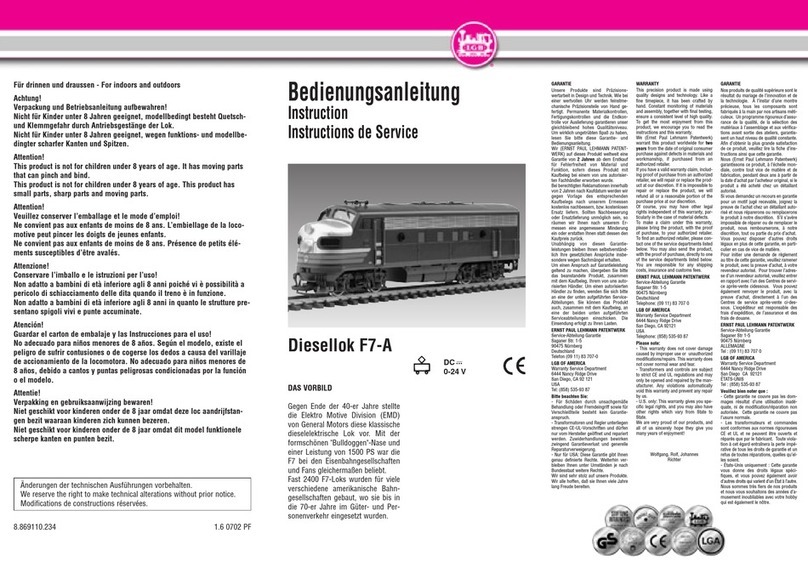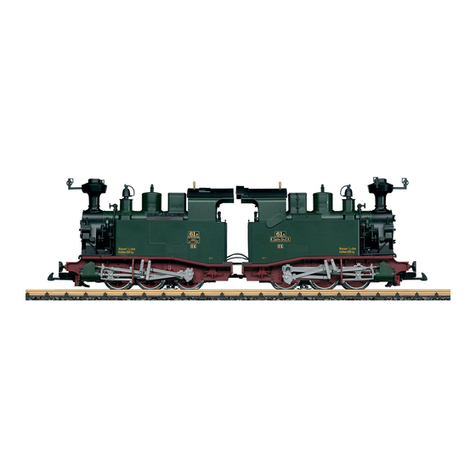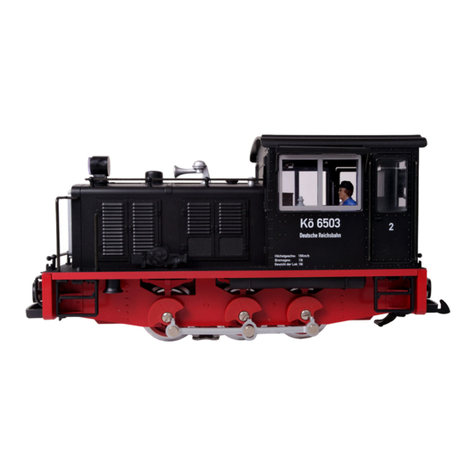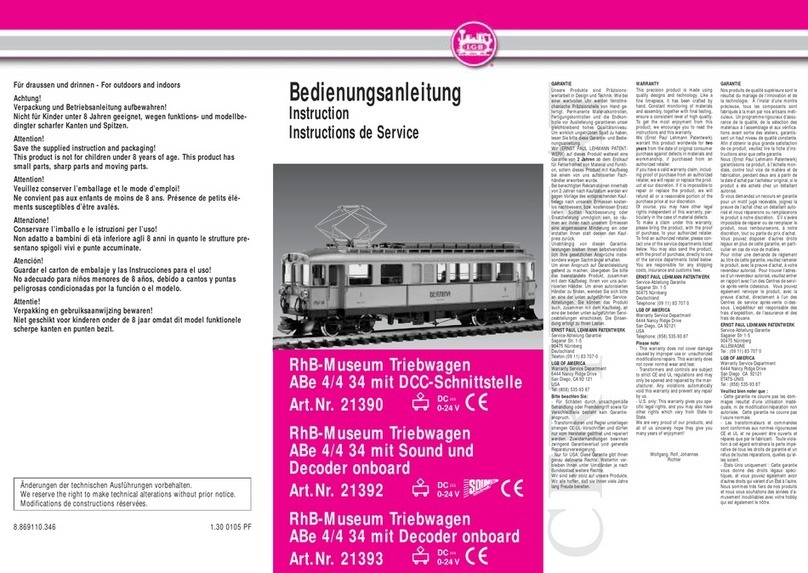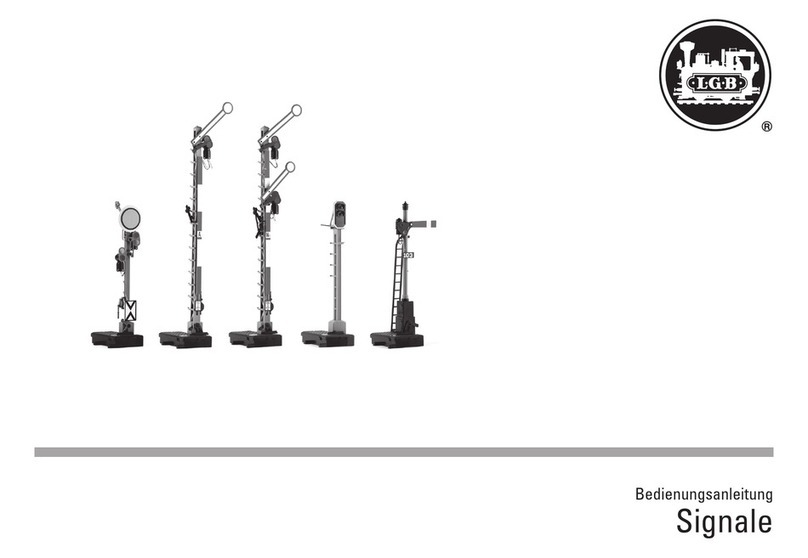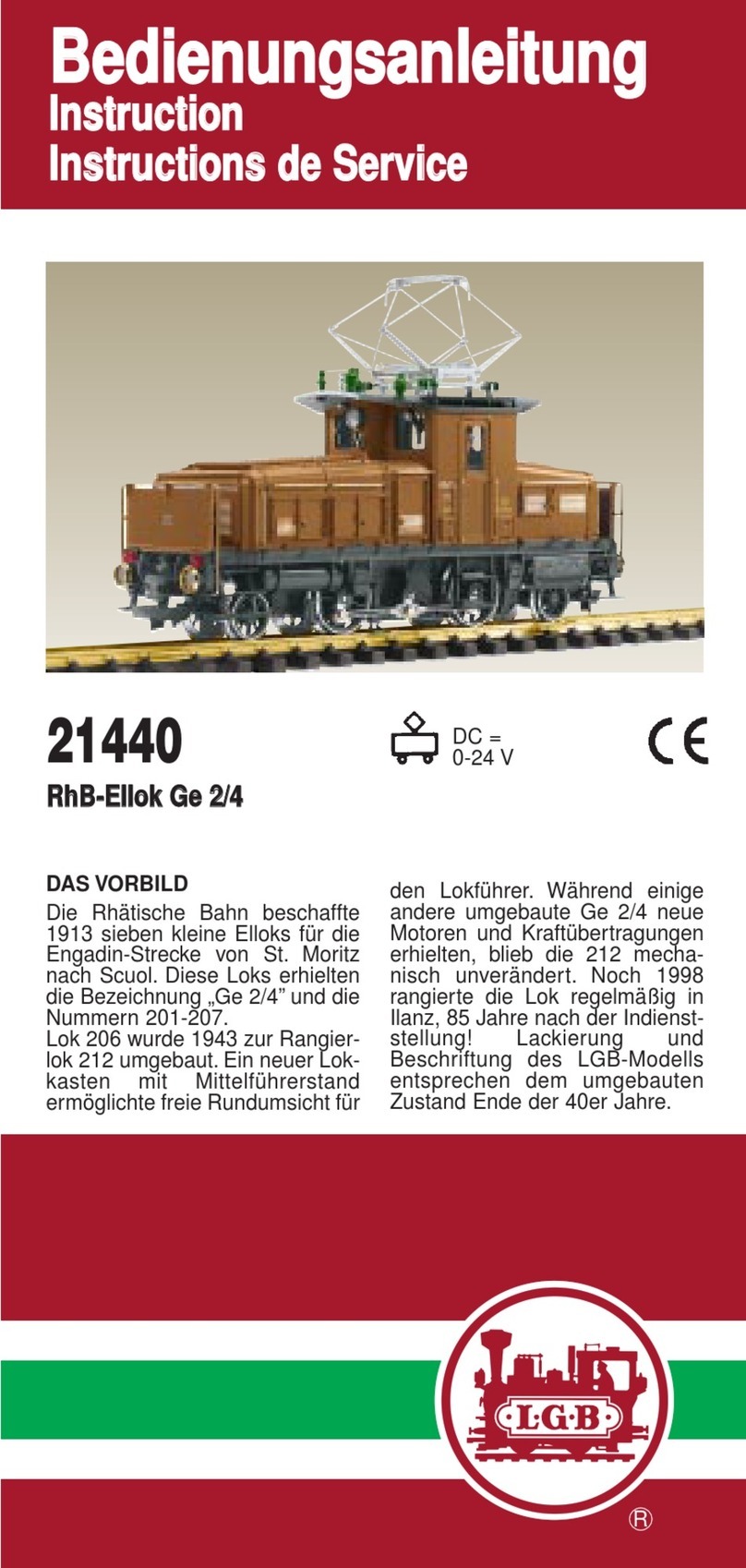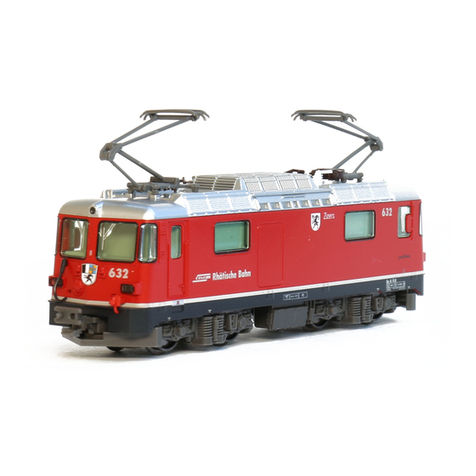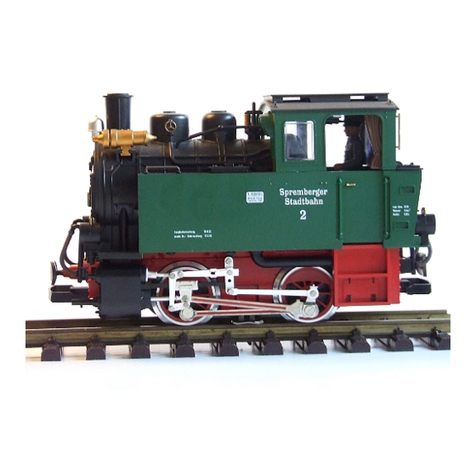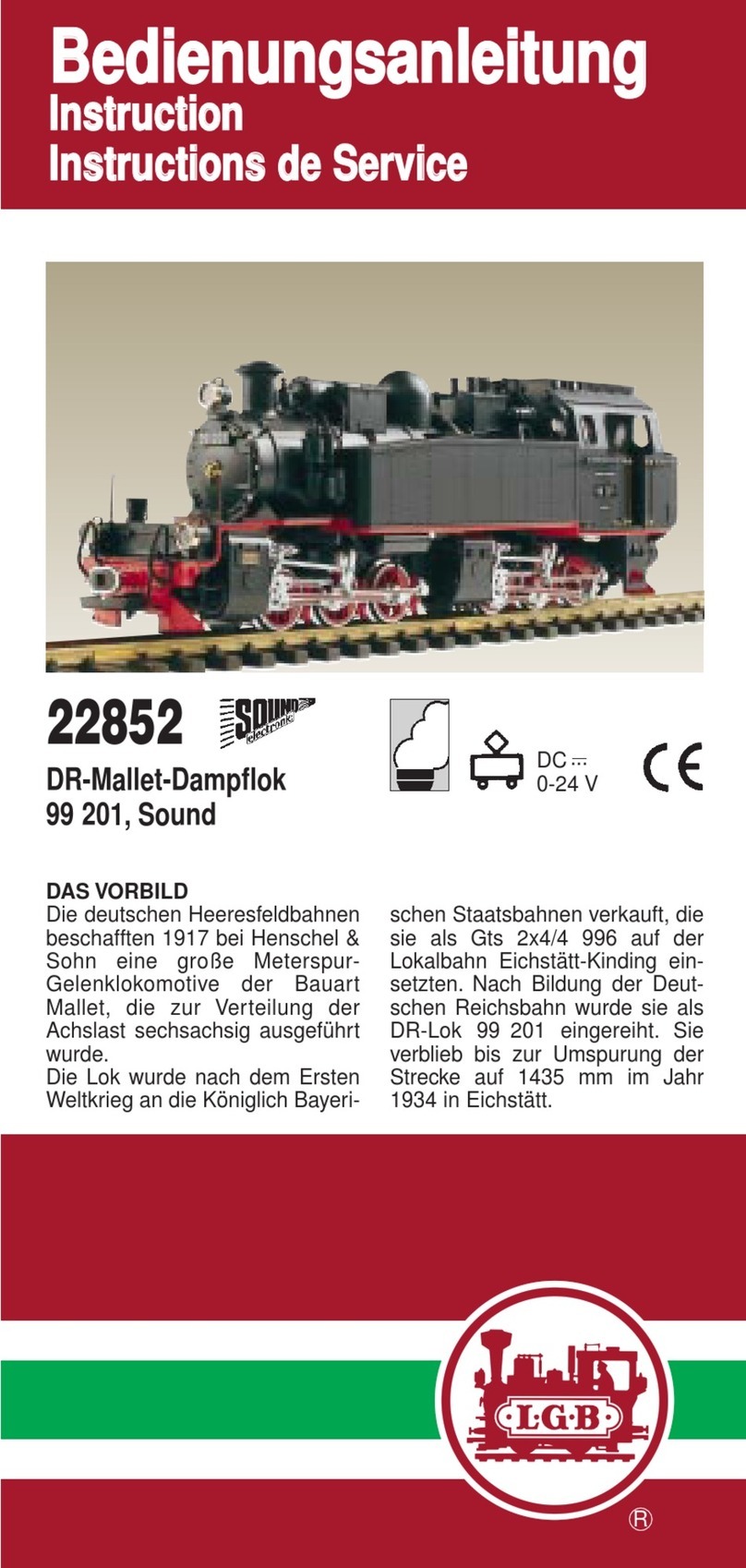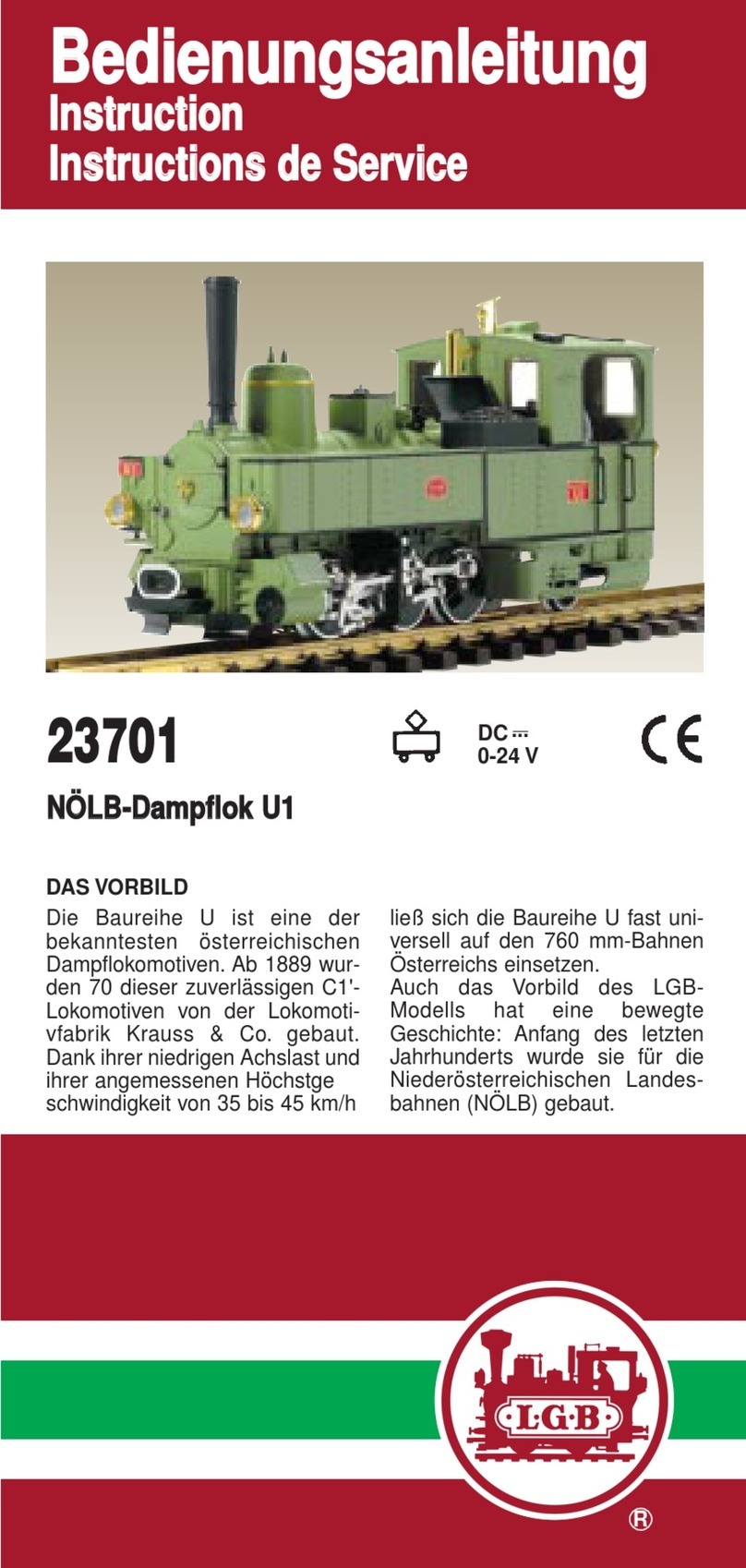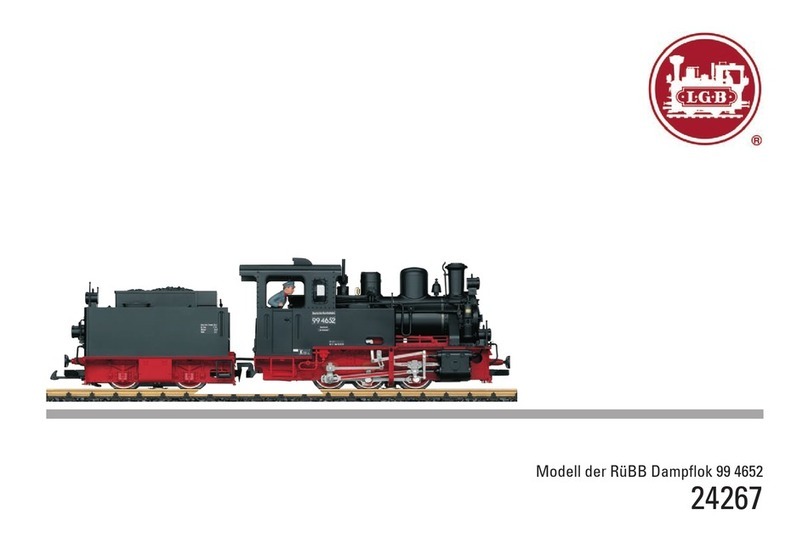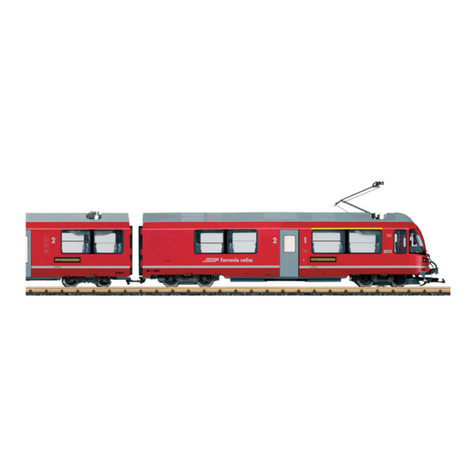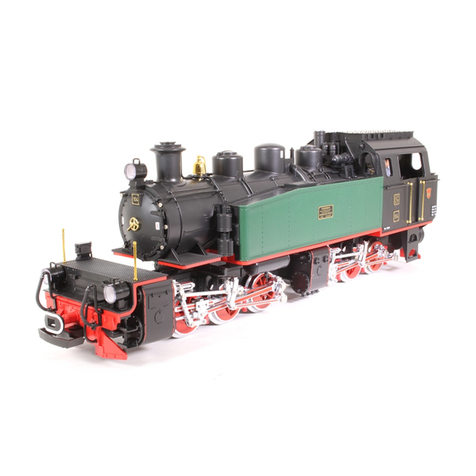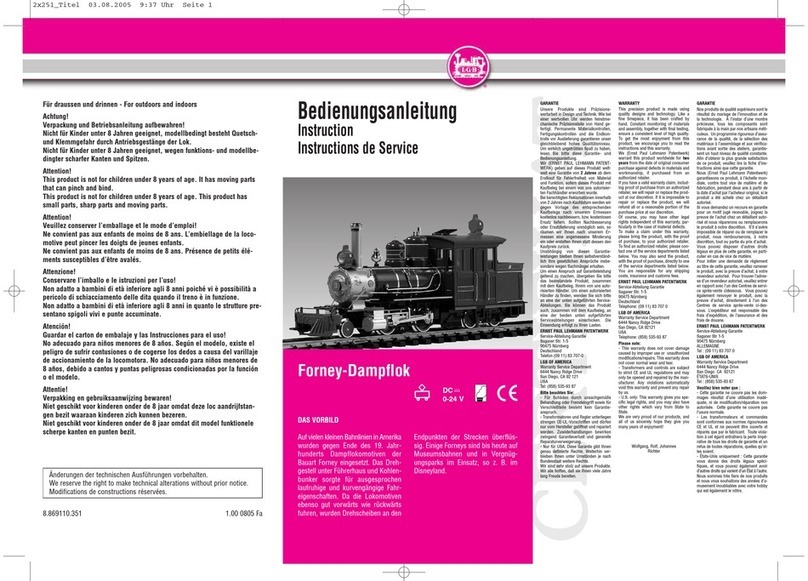
8
Safety Notes
• Thismodelmayonlybeusedwiththeoperatingsystem
designed for it.
• Useonlyswitchedmodepowersupplyunitsandtransfor-
mers that are designed for your local power system.
• Thislocomotivemustneverbesuppliedwithpowerfrom
more than one power pack.
• Paycloseattentiontothesafetynotesintheinstructions
for your operating system.
• Notforchildrenundertheageof15.
• WARNING! Sharp edges and points required for operation.
General Notes
• Theoperatinginstructionsareacomponentpartofthe
product and must therefore be kept in a safe place as
well as included with the product, if the latter is given to
someone else.
• PleaseseeyourauthorizedLGBdealerforrepairsor
spare parts.
• http://www.maerklin.com/en/imprint.html
Functions
• ThismodelisdesignedforoperationonLGBtwo-railDC
systems with conventional LGB DC train controllers or
power packs (DC, 0 - 24 volts).
• Thismodelcomesfromthefactorywithabuilt-inmulti-
train system decoder (multi-train system).
• ForoperationwiththeMulti-TrainSystem,themodelis
programmed to loco address 03.
Note:Usealocomotivecontrollerwithmorethan1ampof
train current for this model.
Mode of Operation Switch
There are two power control switches located in the cab
with the engineer (Figure 1). Use the upper switch to select
track or catenary power (Figure 3).
PositionU: trackpower
PositionO: catenarypower
Usethelowerswitchtoselectamongthefollowingfunctions:
Pos. 0 Locomotive stored on the track without power
Pos. 1 Power to lights and pantograph control
Pos. 2 Power to motors, lights and pantograph control
Pos. 3 Power to motors, sound, lights and pantograph
control
Catenary Power Operation
This locomotive can be operated with a powered catenary
system (see Operating Modes). The bottom of this model is
marked with a red dot. Place the model on the track with
the red dot pointing to the rail that is not connected to the
catenary power supply (Figure 3).
CAUTION! This model may be powered with a catenary on
analog layouts only. For operation with the digital Multi-
Train System, the model must use track power. Otherwise,
dangerously high voltages may result.
Multi-Purpose Socket
This model has “flat“ multi-purpose sockets, with removable
covers, on the front and rear of the loco (Figure 4). If you
are equipping a car with interior lighting or with a sound
effects module, you can connect it to the socket and power
that circuit with track voltage. To remove the cover of the
socket, pull it straight out. If the cover is tight, gently use a








